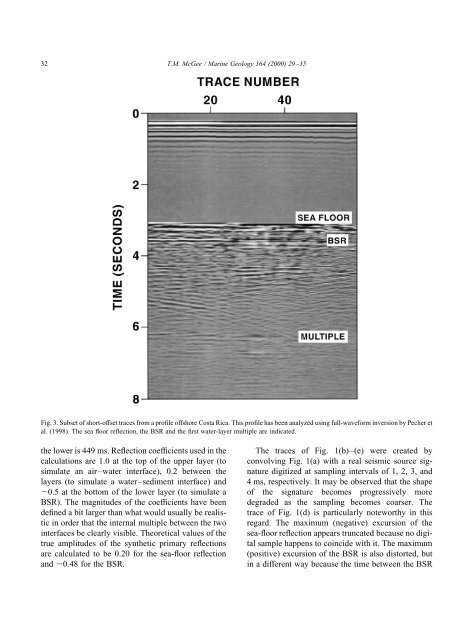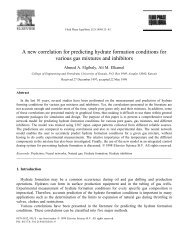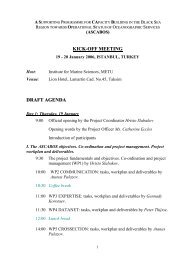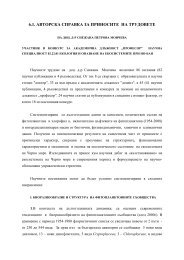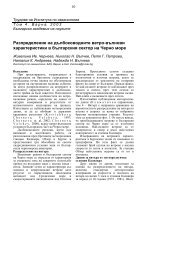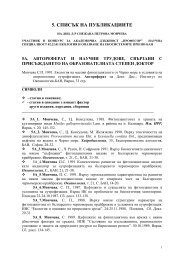A single-channel seismic reflection method for quantifying lateral ...
A single-channel seismic reflection method for quantifying lateral ...
A single-channel seismic reflection method for quantifying lateral ...
You also want an ePaper? Increase the reach of your titles
YUMPU automatically turns print PDFs into web optimized ePapers that Google loves.
32T.M. McGee / Marine Geology 164 (2000) 29–35Fig. 3. Subset of short-offset traces from a profile offshore Costa Rica. This profile has been analyzed using full-wave<strong>for</strong>m inversion by Pecher etal. (1998). The sea floor <strong>reflection</strong>, the BSR and the first water-layer multiple are indicated.the lower is 449 ms. Reflection coefficients used in thecalculations are 1.0 at the top of the upper layer (tosimulate an air–water interface), 0.2 between thelayers (to simulate a water–sediment interface) and0.5 at the bottom of the lower layer (to simulate aBSR). The magnitudes of the coefficients have beendefined a bit larger than what would usually be realisticin order that the internal multiple between the twointerfaces be clearly visible. Theoretical values of thetrue amplitudes of the synthetic primary <strong>reflection</strong>sare calculated to be 0.20 <strong>for</strong> the sea-floor <strong>reflection</strong>and 0.48 <strong>for</strong> the BSR.The traces of Fig. 1(b)–(e) were created byconvolving Fig. 1(a) with a real <strong>seismic</strong> source signaturedigitized at sampling intervals of 1, 2, 3, and4 ms, respectively. It may be observed that the shapeof the signature becomes progressively moredegraded as the sampling becomes coarser. Thetrace of Fig. 1(d) is particularly noteworthy in thisregard. The maximum (negative) excursion of thesea-floor <strong>reflection</strong> appears truncated because no digitalsample happens to coincide with it. The maximum(positive) excursion of the BSR is also distorted, butin a different way because the time between the BSR


